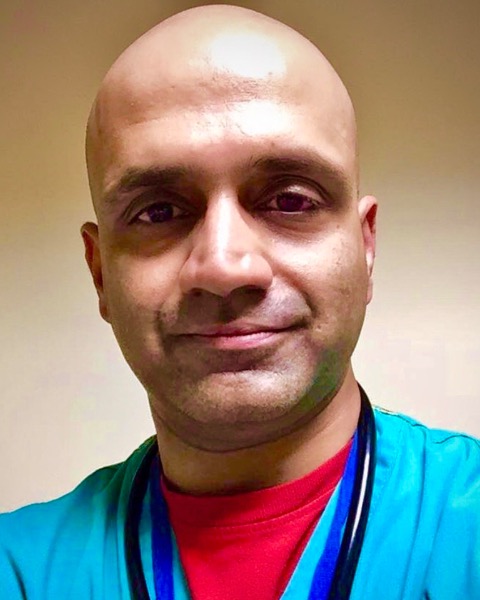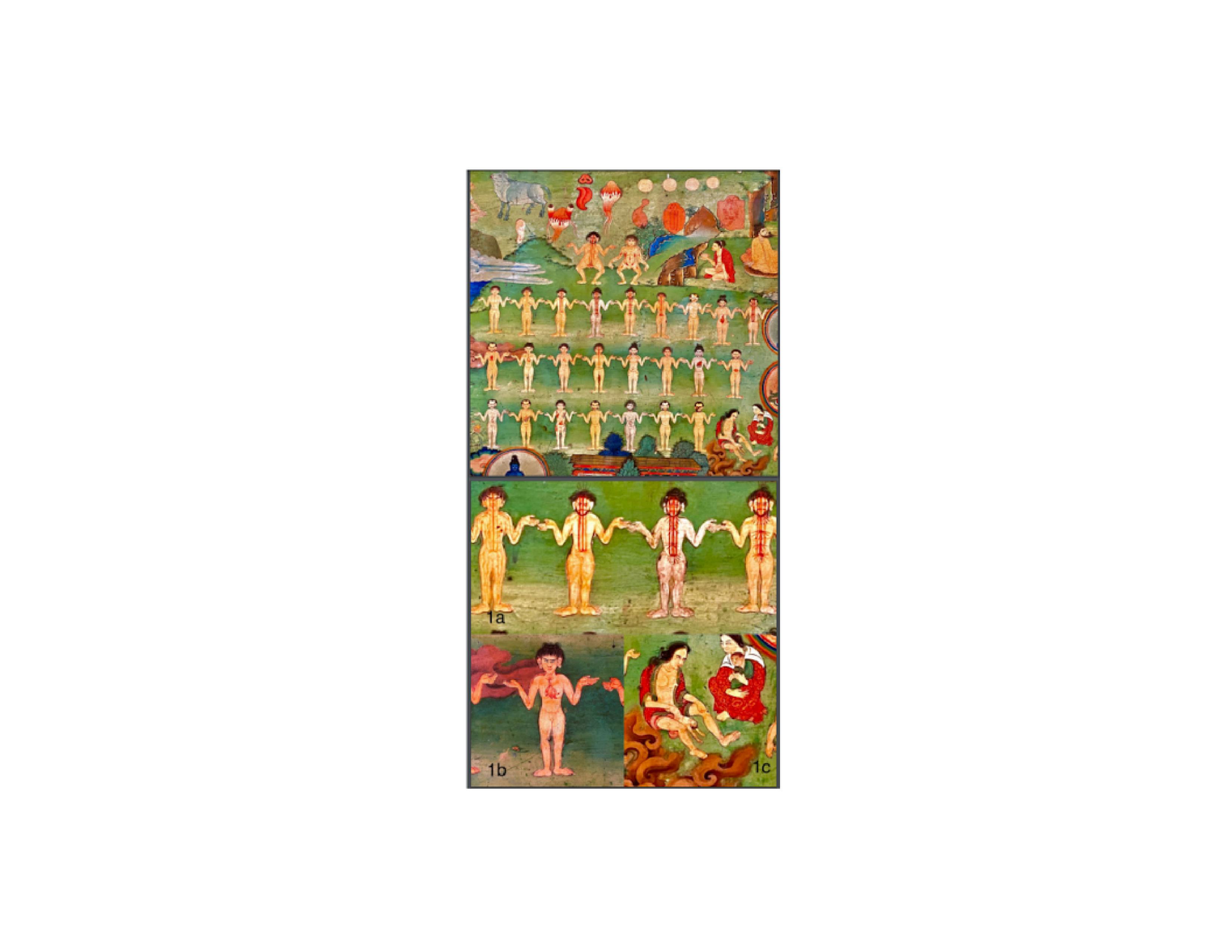Historical Perspectives
Session: Historical Perspectives
810 - Where East meets West: How Ancient Art can Inform Modern Pediatric Medicine
Sunday, April 27, 2025
8:30am - 10:45am HST
Publication Number: 810.7026
Nitin Ron, South Brooklyn Health, Staten Island, NY, United States; Keziah Edmunds, NYP - Brooklyn Methodist Hospital, Staten Island, NY, United States; Dev M. Chhabra, Seton Hall University, Ridgewood, NJ, United States; Levon Agdere, NYP Brooklyn Methodist Hospital, Brooklyn, NY, United States

Nitin Ron, MD (he/him/his)
Attending Neonatologist
South Brooklyn Health
Staten Island, New York, United States
Presenting Author(s)
Background: Advancement of modern medicine through technology and clinical protocols has overlooked the historical insights that ancient arts can offer. Utilizing cultural artifacts, such as the Lukhang murals, can enhance critical thinking and observational skills in pediatricians. Additionally, ancient art reflects past medical successes and failures, providing valuable context for contemporary medical practices.
Art has also been shown to alleviate stress and anxiety. The UK’s ELSA project found a 50% lower risk of dementia and depression when visiting cultural venues at least once every 2-3 months. Training in the arts can help pediatricians increase self-awareness and foster meaningful patient connections, improving health outcomes.
Objective: Developing a curriculum for teaching the history of medicine to pediatricians through ancient art.
Design/Methods: We integrated visits to ancient art museums into the curriculum for medical students and pediatric residents, choosing images relevant to modern medicine with enduring significance in holistic practice. We utilized ancient Indian art texts from the Himalayan Art Resource, and the first author draws upon his experience as a certified art guide at the Rubin Museum of Himalayan Art.
Results: The ancient Lukhang murals depict the 40 weeks of fetal gestation including transformation of a single chambered heart to a four chambered heart and the formation of the CNS and GI tract. They also illustrate safe techniques for handling complicated fetal presentations and post-delivery care (Figure 1).
Parnashavari is a Healing Buddhist Goddess linked to healing, protection, and alleviating suffering (Figure 2L), while Poseidon, the God of the sea, is associated with the element of water in traditional Chinese medicine, relating to emotions and mental health (Figure 2R). Both deities emphasize the interconnectedness and the significance of community for holistic healing, transcending intercultural and racial barriers. This is highlighted by the discovery of Poseidon in archaeological ruins in Western India and Parnashavari in ancient Pompeii.
Conclusion(s): Ancient art depicts a holistic approach to healing which goes beyond the preventive, diagnostic, and therapeutic methods of modern medicine. It promotes inclusivity across cultural and racial boundaries and reveals notable parallels in childbirth and maternal care practices. Studying ancient art promotes self-reflection and development of an integrated approach to medicine. Merging Eastern and Western practices can better equip pediatricians to provide comprehensive and personalized patient care.
Lukhang Murals
 These murals from the ancient meditation temple of the Dalai Lama depict the correlation between spirituality and modern physiology. Part of these murals depict fetal development through embryonic gestation, including CNS (1a), cardiovascular system (1b) and safe techniques of delivering a newborn baby (1c). This piece was on display at the Rubin Museum of Himalayan Art.
These murals from the ancient meditation temple of the Dalai Lama depict the correlation between spirituality and modern physiology. Part of these murals depict fetal development through embryonic gestation, including CNS (1a), cardiovascular system (1b) and safe techniques of delivering a newborn baby (1c). This piece was on display at the Rubin Museum of Himalayan Art.Parnashavari & Poseidon
.jpg) The Healing Buddhist Goddess Parnashavari (Left) was found in Pompeii Italy dated 100 CE. Poseidon (Right) is known as the God of the sea, and this particular statue was found in South India, dated around 200 CE. From: The Tree and The Serpent, Special Exhibit, Metropolitan Museum of Art.
The Healing Buddhist Goddess Parnashavari (Left) was found in Pompeii Italy dated 100 CE. Poseidon (Right) is known as the God of the sea, and this particular statue was found in South India, dated around 200 CE. From: The Tree and The Serpent, Special Exhibit, Metropolitan Museum of Art.These statues were found in countries thousands of miles away from their known origin which suggests active cultural exchange several centuries ago. This is also reflected in the influence Greco-Roman and Indian schools of medicine have had on each other, with Greek physicians like Galen and Hippocrates using Ayurvedic techniques.
Lukhang Murals
 These murals from the ancient meditation temple of the Dalai Lama depict the correlation between spirituality and modern physiology. Part of these murals depict fetal development through embryonic gestation, including CNS (1a), cardiovascular system (1b) and safe techniques of delivering a newborn baby (1c). This piece was on display at the Rubin Museum of Himalayan Art.
These murals from the ancient meditation temple of the Dalai Lama depict the correlation between spirituality and modern physiology. Part of these murals depict fetal development through embryonic gestation, including CNS (1a), cardiovascular system (1b) and safe techniques of delivering a newborn baby (1c). This piece was on display at the Rubin Museum of Himalayan Art.Parnashavari & Poseidon
.jpg) The Healing Buddhist Goddess Parnashavari (Left) was found in Pompeii Italy dated 100 CE. Poseidon (Right) is known as the God of the sea, and this particular statue was found in South India, dated around 200 CE. From: The Tree and The Serpent, Special Exhibit, Metropolitan Museum of Art.
The Healing Buddhist Goddess Parnashavari (Left) was found in Pompeii Italy dated 100 CE. Poseidon (Right) is known as the God of the sea, and this particular statue was found in South India, dated around 200 CE. From: The Tree and The Serpent, Special Exhibit, Metropolitan Museum of Art.These statues were found in countries thousands of miles away from their known origin which suggests active cultural exchange several centuries ago. This is also reflected in the influence Greco-Roman and Indian schools of medicine have had on each other, with Greek physicians like Galen and Hippocrates using Ayurvedic techniques.

